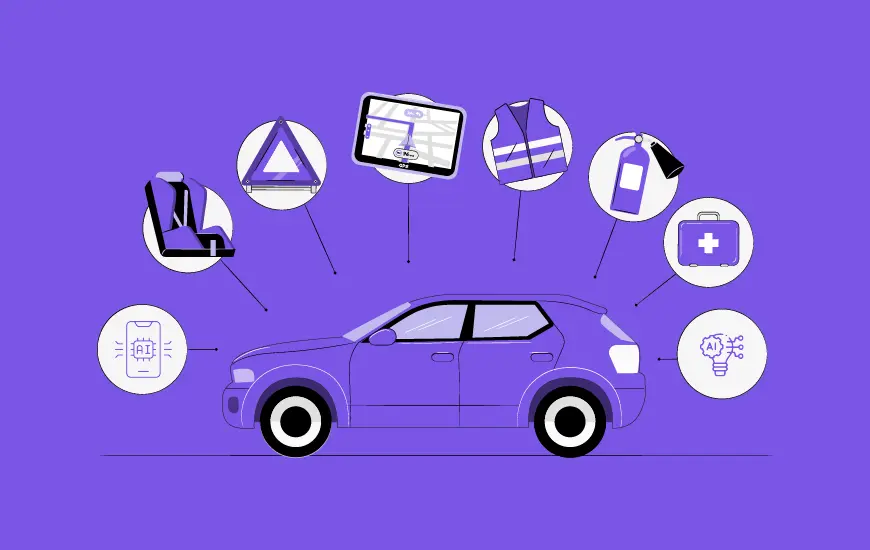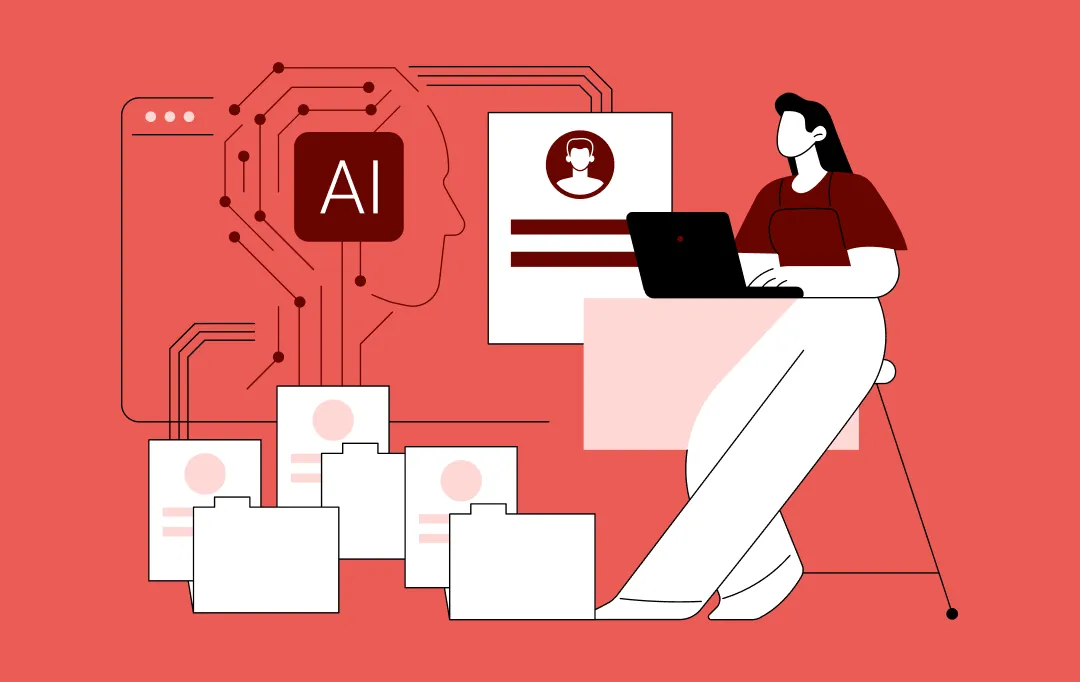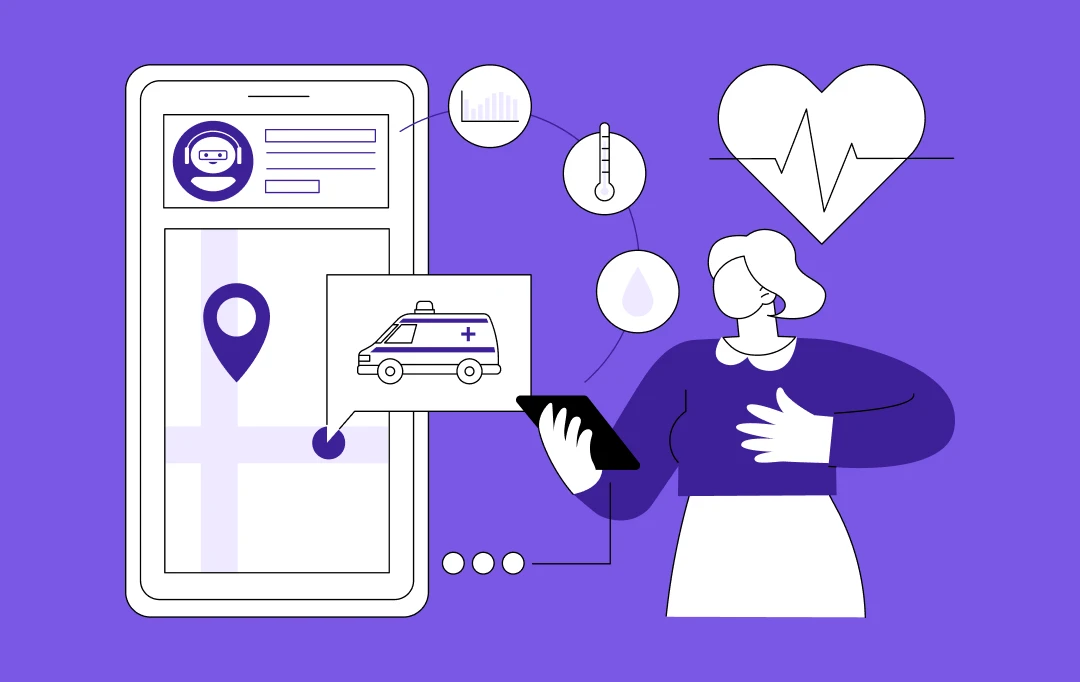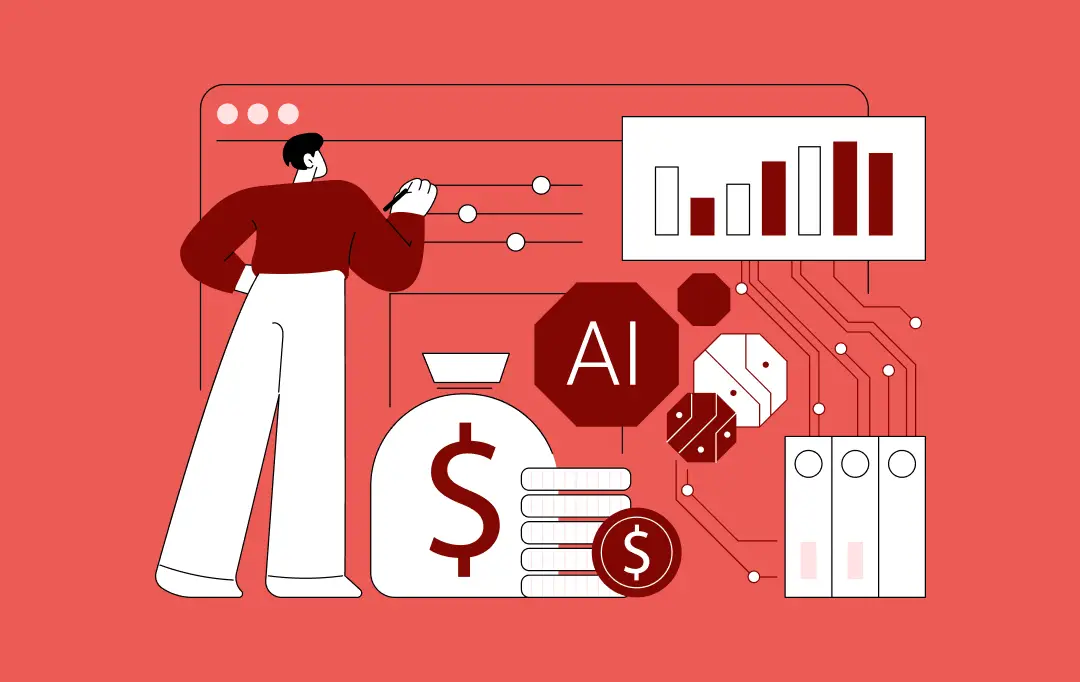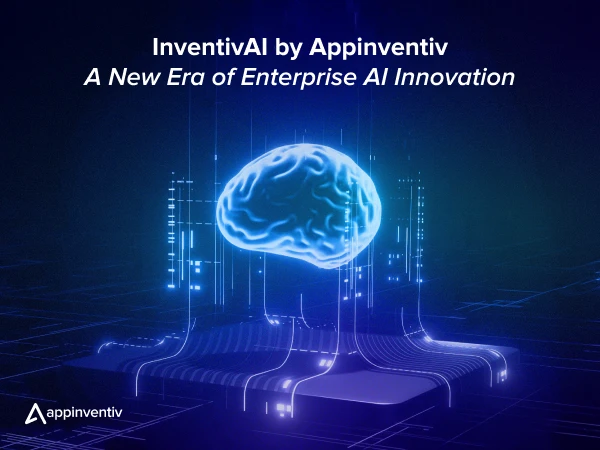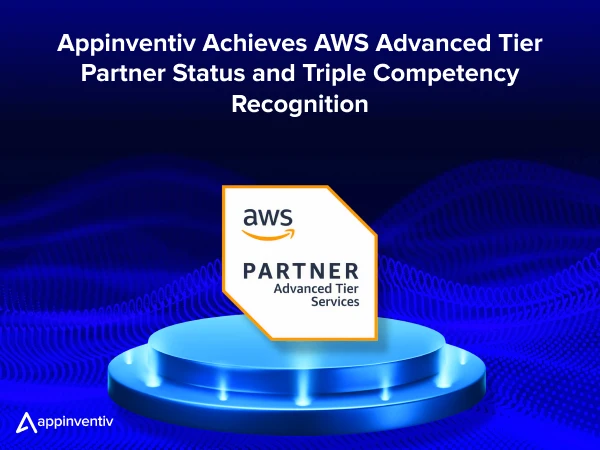- Understanding Product Development Outsourcing
- Types of Outsourcing Models
- In-house vs.Outsourced Product Development: Which is a Better Choice for CIOs
- Benefits of Product Development Outsourcing: Why CIOs Should Take This Tech-Savvy Move
- Focus on Core Business Growth
- Reduced Operational Risks
- Cost Optimization Without Compromising Quality
- Access to Global Talents and Advanced Technology
- Faster Time-to-Market
- Scalability
- What to Outsource in the Product Development Landscape
- Cloud Outsourcing
- AI Integration
- Cybersecurity Challenges
- Legacy System Modernization
- UI/UX Design
- IT Outsourcing
- App Outsourcing
- Software Outsourcing
- Emerging Trends in Product Development Outsourcing
- Growing Demand for Custom Software Development
- Cybersecurity-First Outsourcing
- DevOps and Agile Outsourcing
- Adoption of the Hybrid Workforce Model
- Cloud-Native and Serverless Development
- Sustainability and Green IT in Outsourcing
- Strategic Steps to Successfully Outsource Product Development
- Defining Clear Objectives
- Choose the Right Outsourcing Model
- Find the Right Outsourcing Partner
- Ensure Seamless Communication
- Seal the Deal
- Monitor Performance and Quality Assurance
- Challenges of Outsourcing Product Development and How to Overcome Them
- Communication Barriers
- Data Security Risks
- Quality Control Issues
- Real World Examples of Companies that Outsourced Product Development and Received Tangible Outcomes
- Domino’s
- KFC
- IKEA
- What is the Cost of Outsourced Product Development
- Ensure a Seamless Journey of Product Development Outsourcing with Appinventiv
- FAQs
Outsourcing product development is not just a buzzword or a futuristic concept; it is a present reality in the modern business world. What started as a trend during the COVID-19 pandemic has become a new norm for businesses across industries.
The Grand View Research report indicates that the global business process outsourcing market will hit $525 billion by 2030. This whopping market projection is not just speculation. With 92% of G2000 companies already outsourcing their IT processes and 37% of small businesses delegating at least one of their operations to an external partner, the outsourcing market seems to expand exponentially in the coming years.
An influential management theorist, Peter Drucker, once said, “Do what you do best and outsource the rest.” Forward-thinking companies are taking this wisdom to heart, leveraging outsourcing to streamline operations and focus on their core strengths.
However, as a CIO or business leader wishing to outsource your IT processes, you are most likely to grapple with some critical questions, such as:
- When should you outsource product development?
- What are the benefits of outsourced product development?
- How do you outsource product development and choose the right partner?
- What is the cost of outsourcing product development?
- How does in-house development compare to outsourcing, and which is a wiser choice for you?
Well, bother not. This pocket guide answers these pressing questions, helping you navigate the world of product development outsourcing for CIOs with clarity and confidence. Let’s dive in.
Understanding Product Development Outsourcing
Product development outsourcing is the process of delegating the design, development, and deployment of software, applications, or digital products to an external third-party service provider. This approach allows businesses to access a global talent pool, reduce operational costs, adopt emerging technologies, improve product innovation, and accelerate time-to-market without overburdening or extending their in-house teams.
Deloitte Global Outsourcing Survey 2024 found that 34% of businesses outsource to cut costs, while many do so to focus on core business operations.
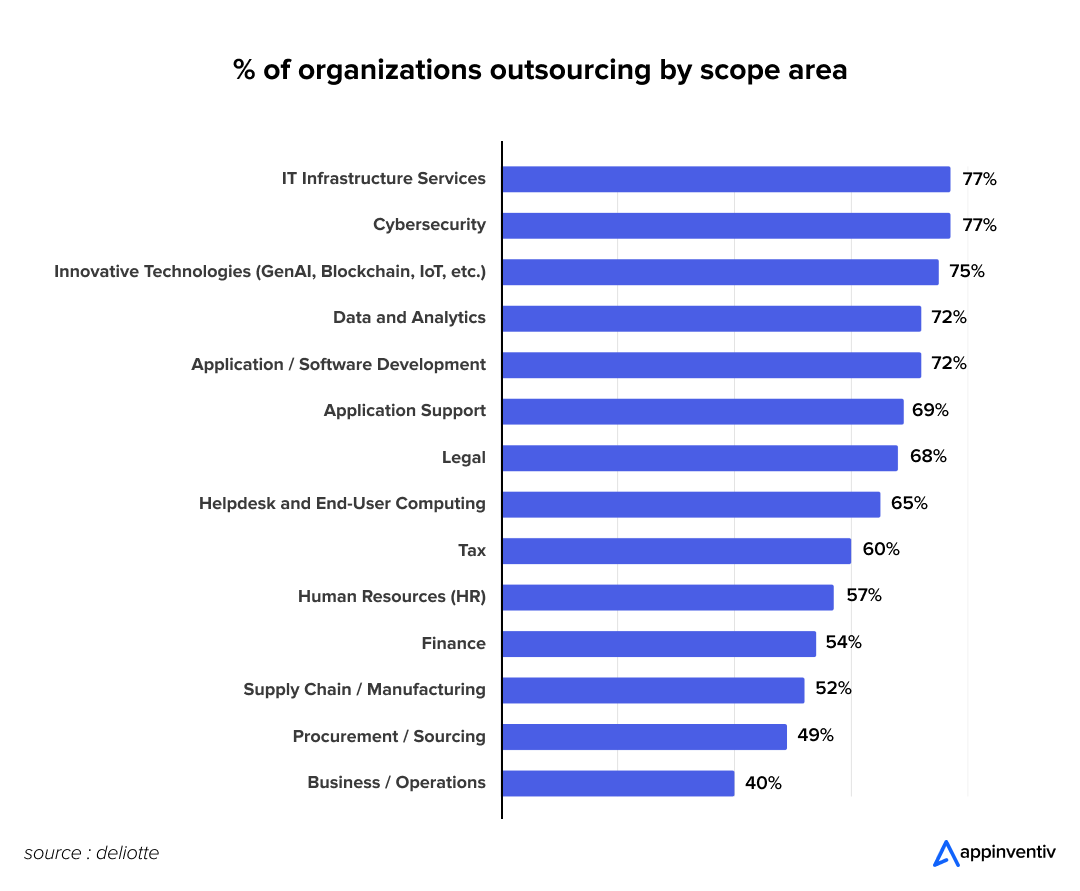
Types of Outsourcing Models
There are typically four types of outsourced product development services. Choosing the right outsourcing model typically depends on some critical components like budget, project complexity, and the level of collaboration required. The table below gives an overview of each of the models:
| Outsourcing Model | Description | Best For |
|---|---|---|
| Onshore Outsourcing | Partnering with a vendor within the same country offers seamless communication and cultural alignment, but comes at a higher cost. | Enterprises are prioritizing collaboration and compliance with local regulations. |
| Nearshore Outsourcing | Outsourcing to a neighboring or nearby country with minimal time zone differences. Balances cost and accessibility. | Companies need real-time collaboration, but at a lower cost than onshore. |
| Offshore Outsourcing | Partnering with a dedicated development team or a company in a distant country. | Businesses are focusing on cost-effectiveness and 24/7 development cycles. |
| Hybrid Outsourcing | It combines in-house resources with external teams to achieve a balanced and efficient operational model. | Organizations require a mix of onsite and remote collaboration for critical projects. |
In-house vs.Outsourced Product Development: Which is a Better Choice for CIOs
In today’s fast-paced digital economy, CIOs face immense pressure to expand their digital wings while keeping costs in check.
The dilemma? Should we overload or develop an in-house team, or count on outsourced product development companies?
Both approaches have their own merits and demerits. While in-house teams offer several advantages like quality control, outsourcing unlocks speed, expertise, and scalability. So, how will you choose one? Well, to clarify the confusion, here is a detailed overview of both approaches:
| Element | In-House Product Development | Outsourced Product Development Companies |
|---|---|---|
| Cost Efficiency | High operational costs (salaries, infrastructure, training). | Lower costs with flexible pricing models. |
| Talent and Expertise | Limited to the internal team’s skillset. | Access to global talent with specialized expertise. |
| Time-to-Market | Slower due to long hiring, training, and development cycles. | Faster due to ready-to-deploy expert teams. |
| Scalability | Difficult and costly to scale up or down. | Easily scalable based on project needs. |
| Innovation and Technology | Dependent on internal R&D investments. | Leverages the latest technologies without upfront investment. |
| Focus on Core Business | Focus can be diverted due to other business functions. | Allows businesses to focus on core operations while experts tackle the development task. |
Unsurprisingly, outsourcing product development is wise for CIOs wishing to elevate their digital transformation journey and stay ahead in the digital race. To understand how outsourcing outperforms an in-house team, refer to our detailed blog on In-house vs. Outsource: The Right App Development Approach.
Benefits of Product Development Outsourcing: Why CIOs Should Take This Tech-Savvy Move
Product development outsourcing is excellent for businesses looking to develop a digital product. It provides various benefits, including faster innovation, risk reduction, and global scalability. Here are some of the key reasons to outsource product development:
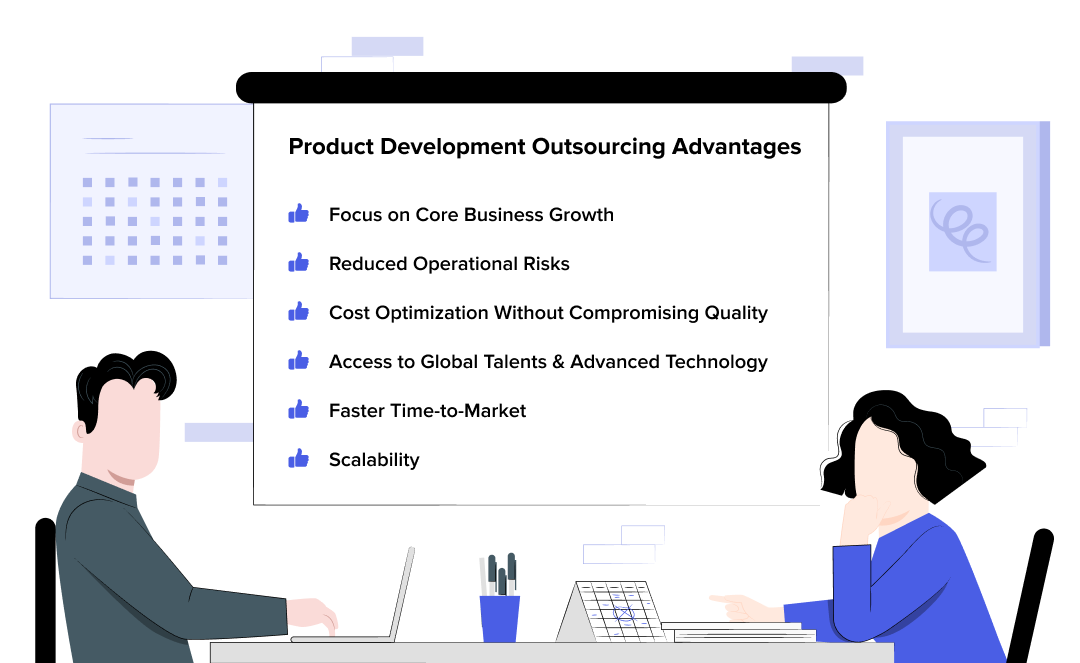
Focus on Core Business Growth
By outsourcing product development, CIOs and business leaders can redirect internal resources to focus on core business functions where they excel, such as business expansion, customer engagement, inventory management, etc., rather than getting entangled in day-to-day development challenges.
Reduced Operational Risks
Outsourcing firms bring structured processes, risk management frameworks, and compliance expertise to ensure smooth project execution. This minimizes the risk of delays, security vulnerabilities, and non-compliance issues, helping businesses navigate complexities confidently.
Cost Optimization Without Compromising Quality
Outsourcing eliminates the hefty expenses of hiring, training, and maintaining an in-house team. With flexible engagement models and digital communication modes, businesses pay only for the expertise they need. This significantly reduces operational and infrastructure costs while ensuring top-tier quality.
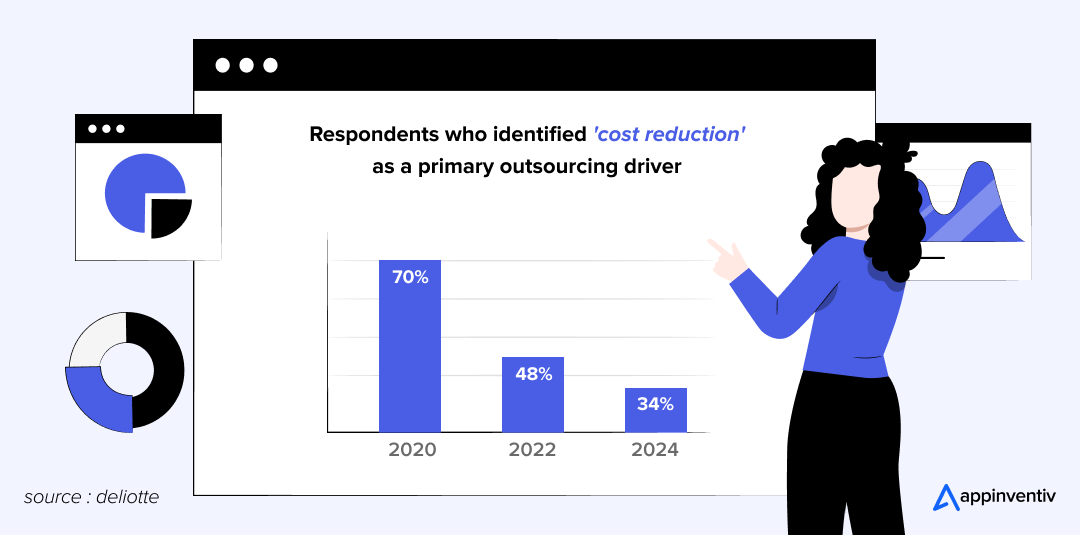
Access to Global Talents and Advanced Technology
Product development outsourcing connects businesses with highly skilled engineers, designers, and domain experts worldwide. This ensures companies get the best talent with expertise in emerging technologies like AI, IoT, and cloud computing.
Bonus Reads:
How To Make Your IoT Project Successful
Cloud Computing for Businesses
Faster Time-to-Market
You can’t afford to overlook speed if you dream of winning in today’s digital race. And this is where outsourced product development companies fit in. They have pre-vetted teams ready to transform your vision into reality, reducing development cycles and accelerating product launches without bottlenecks.
Scalability
Another great benefit of product development outsourcing is scalability. It enables businesses to seamlessly expand their team with remote developers when needed and scale down instantly when project demands decrease or there is no specific task for them to handle.
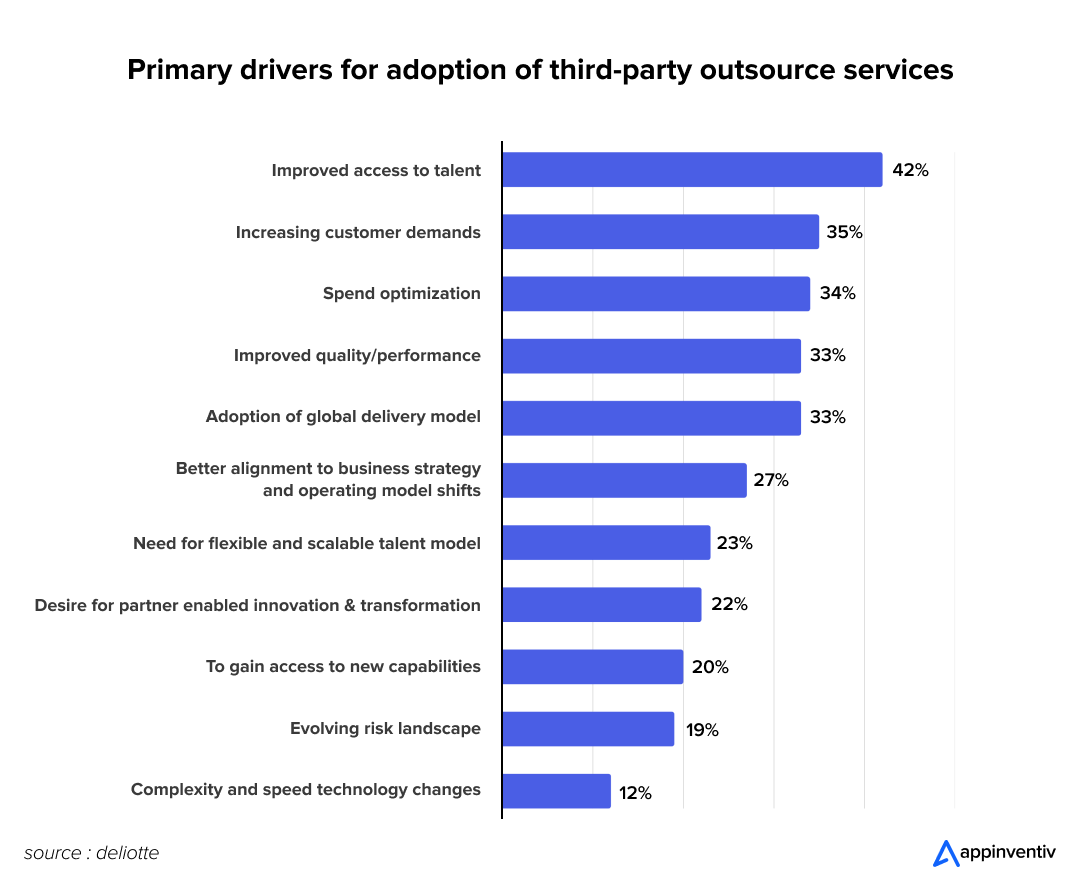
What to Outsource in the Product Development Landscape
Businesses can outsource nearly every product development and maintenance aspect, from UI/UX design and MVP development to cloud migration, AI integration, cybersecurity, and legacy system modernization. Let’s look at the different aspects that can be outsourced in the product development landscape.
Cloud Outsourcing
Cloud outsourcing involves transferring the responsibility of cloud infrastructure setup, migration, management, and optimization to a specialized third-party provider. This is essential for businesses looking to scale operations, improve flexibility, and reduce infrastructure costs.
By outsourcing cloud services, organizations gain access to skilled cloud experts who ensure secure migration from on-premise systems to cloud platforms like AWS, Azure, or GCP.
AI Integration
AI integration is one of the most critical aspects of product development outsourcing. Outsourcing AI integration helps businesses embed intelligence into their products without building internal AI capabilities from scratch. From natural language processing and predictive analytics to generative AI and recommendation systems, outsourcing allows for high-impact implementation and accelerated digital transformation.
Must Read: How Causal AI is Reshaping Enterprise Strategy
Cybersecurity Challenges
Cybersecurity outsourcing delegates critical security functions like threat detection, vulnerability assessment, network monitoring, and compliance management to external cybersecurity experts. These digital security personnel help businesses significantly reduce the risks of costly data breaches or reputational damage. This is particularly vital for companies handling sensitive user data or operating in regulated sectors like healthcare, finance, etc.
Legacy System Modernization
Outsourcing legacy system modernization involves collaborating with tech partners to refactor, re-platform, or completely rebuild outdated systems using modern architectures and advanced technologies. This helps businesses boost system performance, reduce technical debt, and elevate their digital transformation journey.
UI/UX Design
When developing a new digital product, you can’t afford to overlook the importance of crafting an intuitive and appealing UI/UX. This is crucial for improving user engagement, reducing churn, and ensuring consistent brand identity across platforms.
This makes it invaluable for businesses to outsource skilled designers specializing in creating user-centered digital experiences. They understand users’ behavioral psychology and platform-specific design principles, ensuring the final product is visually appealing, highly intuitive, and conversion-optimized.
IT Outsourcing
IT outsourcing utilizes external service providers to efficiently deliver IT-enabled business solutions, software development services, and infrastructure processes for business outcomes.
A successful IT outsourcing strategy helps you achieve your vision and growth, and structure the best business objectives for sustainable services. With the right outsourcing strategies, you can reduce overall costs, accelerate time to market, and leverage technology assets.
App Outsourcing
App outsourcing involves delegating mobile and web application design, development, and maintenance to an external third-party service provider. Whether it’s a consumer-facing app, an enterprise mobility platform, or an AI-powered application, outsourcing allows businesses to access the world’s top talent without the overhead of managing an in-house team.
One of the biggest advantages of app outsourcing is access to skilled UI/UX designers who craft an intuitive and engaging user interface, ensuring higher user engagement and retention. This approach also helps businesses integrate emerging technologies like AI, IoT, and blockchain and accelerate development cycles, ensuring faster releases and ongoing improvements.
Software Outsourcing
Software outsourcing encompasses a broad spectrum of custom software development, including enterprise solutions, SaaS products, data-driven platforms, and cloud-based systems. Businesses outsource software development when they need tailored solutions that align with their operational needs, whether automating processes, enhancing data security, or integrating AI-driven analytics for businesses.
One key benefit of software outsourcing is access to specialized expertise in complex tech stacks. Companies can work with skilled backend engineers, DevOps professionals, AI specialists, and cybersecurity experts who ensure scalable and secure software development and integration. This approach is particularly valuable for businesses in regulated industries like finance, healthcare, and legal tech, where compliance and security are non-negotiable priorities.
Related Article: Software Development Outsourcing Tips From 15 Industry Experts
App Outsourcing vs. Software Outsourcing
App and software development are the two most critical pillars of digital transformation, both essential for building scalable, high-performance solutions without overburdening in-house teams.
App outsourcing and software outsourcing serve distinct business needs. While app outsourcing focuses on building and managing mobile or web applications, software product development outsourcing covers a wider range of digital solutions, including enterprise software, SaaS platforms, and custom-built systems. Understanding these two aspects helps businesses choose the right approach for their goals.
| Business Need | Why App Outsourcing? | Why Software Outsourcing? |
|---|---|---|
| Launching a new digital product | Quickly build a feature-rich mobile or web app with expert developers. | Develop custom enterprise software, SaaS platforms, or AI-powered solutions. |
| Scaling an existing application | Add new features, enhance UI/UX, and improve performance without stretching your in-house team. | Optimize backend architecture, improve database performance, or migrate to the cloud. |
| Legacy system modernization | Upgrade older applications to work seamlessly with modern mobile and web technologies. | Transform outdated software with cloud migration, microservices, and advanced automation. |
| CRM and ERP integration | Develop companion apps for better mobile access to CRM and ERP tools. | Seamlessly integrate enterprise systems with AI, automation, and cloud-based solutions. |
| Security and Compliance | Ensure secure app development with data encryption, authentication, and compliance. | Work with cybersecurity experts to meet industry regulations like GDPR, HIPAA, and PCI-DSS. |
| AI, IoT, and automation | Embed AI-driven features, voice assistants, or IoT connectivity into mobile/web apps. | Implement scale-based AI, machine learning, predictive analytics, or intelligent automation. |
| Post-launch maintenance and updates | Ensure seamless updates, bug fixes, and feature enhancements. | Get long-term support for software upgrades, performance monitoring, and security patches. |
Emerging Trends in Product Development Outsourcing
As we move forward in today’s digitally driven phenomenon, we find that the landscape of product development outsourcing is evolving rapidly, driven by technological advancements, changing business needs, and the demand for faster innovation. This reflects that companies are no longer outsourcing product development to cut costs; they are leveraging external expertise to enhance agility, elevate the digital transformation journey, and stay ahead of the competition.
Here are some key trends reshaping the product development outsourcing landscape:
Growing Demand for Custom Software Development
Pre-built software solutions often fail to meet businesses’ unique operational needs, limiting scalability and efficiency. To bridge this gap, companies are increasingly outsourcing custom software development to build tailored solutions that enhance workflows and user experience.
According to Grand View Research, the custom software development market was valued at $43.16 billion in 2024 and is expected to grow at a 22.6% CAGR from 2025 to 2030, driven by the need for scalable, business-specific applications.

Cybersecurity-First Outsourcing
With the estimated annual cost of cybercrime worldwide projected to reach $15.63 trillion by 2029, security is no longer an afterthought in outsourcing. Cybersecurity threats are escalating at an unprecedented rate, with cybercriminals constantly devising new tactics to exploit vulnerabilities and infiltrate corporate networks.
Emphasizing this trend, Steve Morgan, Founder of Cybersecurity Ventures, said, While Amazon, Meta, Twitter, Microsoft, Google, and the other tech giants are going through layoffs, our industry has hung out an enormous Help Wanted sign.
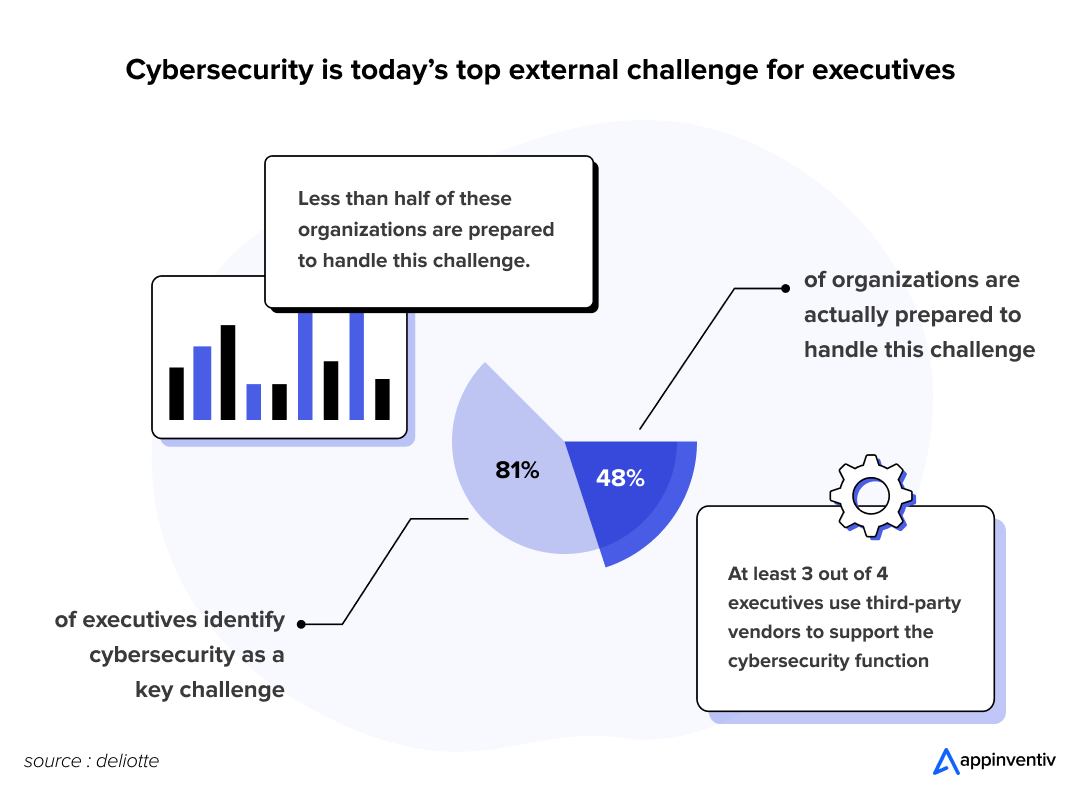
As a result, to overcome cybersecurity challenges in business, companies are increasingly hiring outsourced product development services with strict security protocols, including:
- SOC 2, ISO 27001, and GDPR compliance
- An AI cybersecurity approach to predict and prevent cyber threats
- Zero-trust architecture to prevent unauthorized access
- Proactive security monitoring and AI-driven threat detection
DevOps and Agile Outsourcing
The DevOps revolution has made traditional, linear outsourcing models obsolete. Businesses now expect agile-driven outsourcing, where development teams work in rapid, iterative sprints to speed up releases and reduce errors.
According to Digital.ai’s latest Annual State of Agile Report, over 70% of respondents incorporate Agile methodologies in their software development lifecycle (SDLC). Additionally, 42% of organizations have adopted a hybrid approach, blending Agile with DevOps and other frameworks to optimize their development processes.
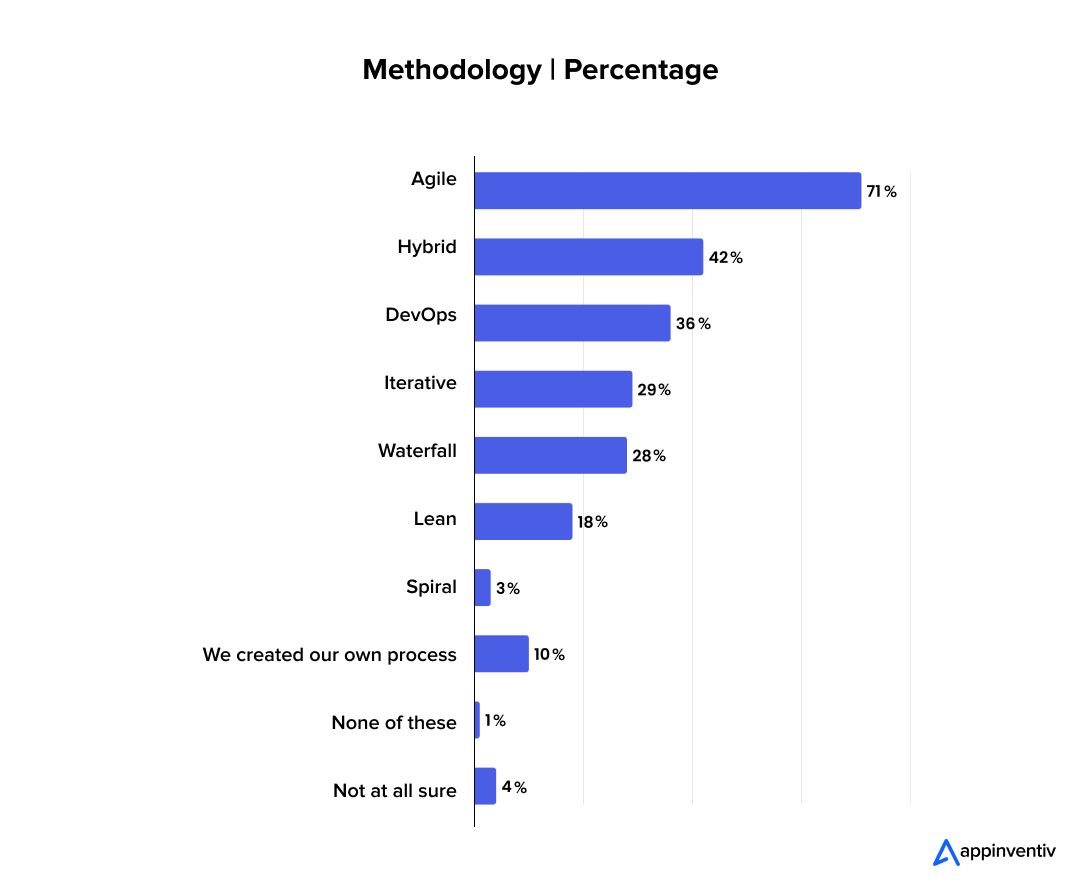
Adoption of the Hybrid Workforce Model
The global shift to remote and distributed teams has reshaped outsourcing, giving rise to hybrid workforce models. This approach blends in-house teams with outsourced talent, offering greater flexibility and access to specialized expertise.
In a recent internal survey, 92% of Microsoft employees stated that the company supports flexibility, enabling them to work in ways that best suit their needs. This highlights how a thoughtfully designed hybrid workforce strategy can bridge skill gaps and maintain operational efficiency. Companies now partner with outsourcing providers that integrate seamlessly with internal teams, ensuring productivity without geographical limitations.
Cloud-Native and Serverless Development
As enterprises increasingly embrace cloud-first strategies, cloud-native and serverless architectures dominate product development outsourcing. These models eliminate infrastructure management.
A MarketsandMarkets report predicts that the serverless computing market will reach $44.7 billion by 2029, driven by businesses seeking cost-effective, scalable solutions. Leading cloud providers like AWS (Lambda), Google Cloud (Cloud Functions), and Microsoft Azure (Functions) are making serverless adoption easier, and outsourcing firms are leveraging these technologies to build highly scalable applications with minimal operational overhead.
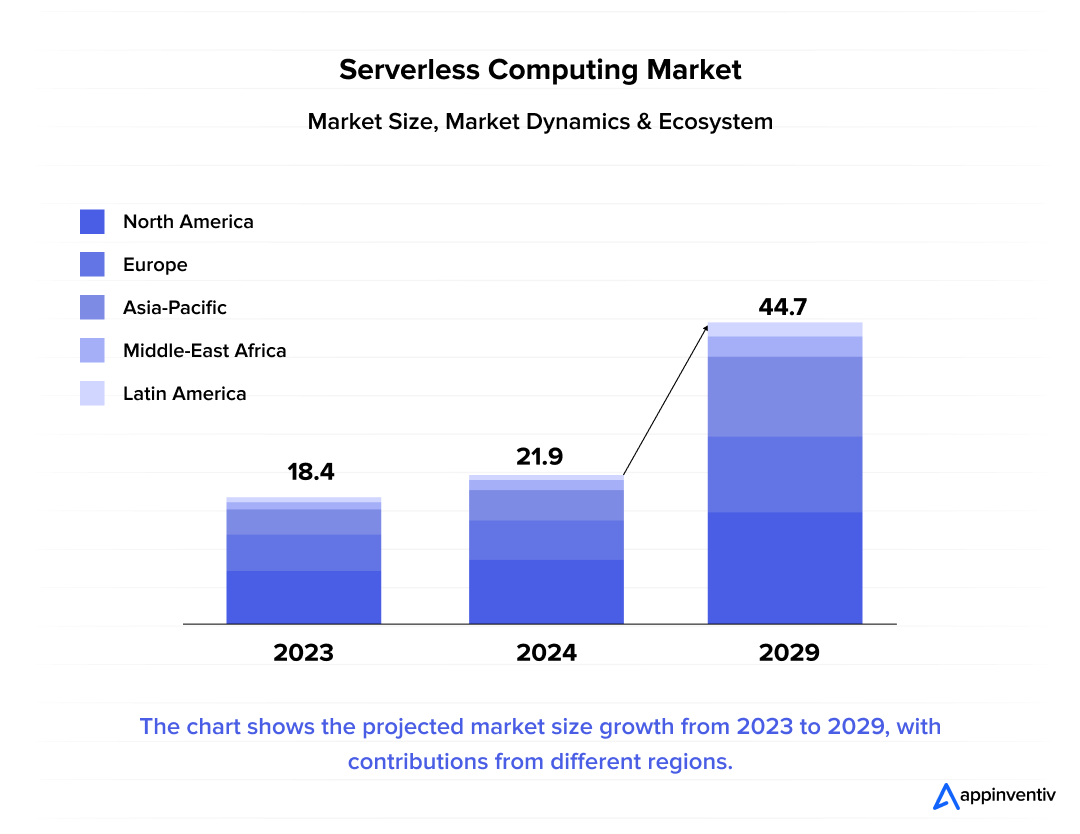
Sustainability and Green IT in Outsourcing
Gartner predicts that by 2027, 75% of organizations will have a sustainability program for their data center infrastructure. As businesses strive to reduce their carbon footprint and embrace sustainability in their operational workflow, green IT adoption has become a key factor in outsourcing decisions. Companies are increasingly looking to partner with outsourced product development companies that embrace green AI and eco-friendly development practices, from energy-efficient coding to carbon-neutral cloud computing.
Strategic Steps to Successfully Outsource Product Development
As said above, outsourced product development can drive innovation, enhance efficiency, and reduce costs, but a haphazard approach can lead to delays and misalignment. The success of outsourced product development depends on a well-planned approach. You can follow these key product development outsourcing steps to ensure a smooth outsourcing journey:
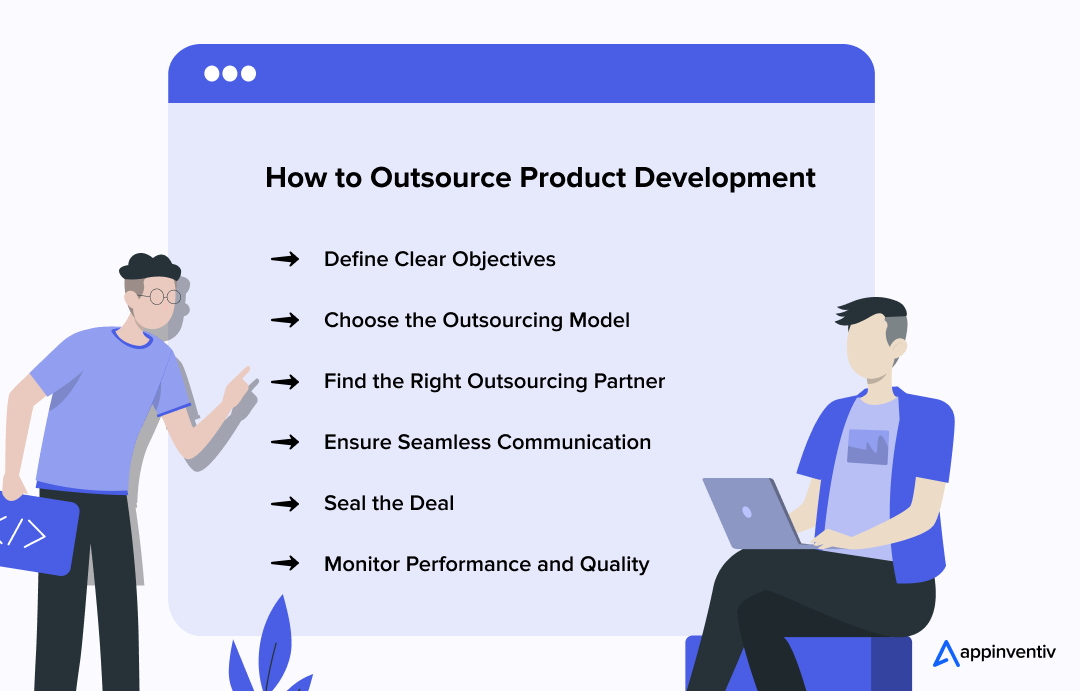
Defining Clear Objectives
The outsourced product development process starts with a well-structured vision and problem identification. What problem will your product solve? What are its key features? How will it differ from your competitors’ products and stand out? Identifying these pain points and defining your goals upfront ensures that your outsourcing partner will deliver the best results that align with your expectations, avoiding costly revisions later.
Choose the Right Outsourcing Model
The next vital step is to choose the right outsourcing model. The right outsourcing is a profitable choice for startups. As mentioned, there are typically four outsourcing models: Onshore, offshore, nearshore, and hybrid; not all outsourcing models fit every business. Therefore, you must evaluate every type and pick the one that aligns with your project scope, budget, and level of control:
Find the Right Outsourcing Partner
Choosing the right outsourcing partner is pivotal in your product development journey. The right team can transform your vision into a successful product, while the wrong choice can lead to costly errors or even project failure. Therefore, when choosing the right outsourcing partner and ensuring a seamless collaboration, you must thoroughly evaluate potential partners, assess their expertise, and select a team that aligns with your goals and quality standards.
Also Read: How to hire mobile app developers for your custom project?
Ensure Seamless Communication
Effective communication and the right IT outsourcing strategies are the backbone of successful outsourcing. Miscommunication can lead to project bottlenecks, delays, misunderstandings, and costly errors. Establishing open channels, scheduling regular check-ins, and using project management tools helps keep everyone aligned, ensuring seamless collaboration between the in-house team and outsourced developers.
Seal the Deal
Once you have found the right outsourced product development company and established communication channels, the next step is to formalize the partnership by signing the contract. This means setting clear project milestones, defining payment terms, and outlining intellectual property rights and confidentiality agreements. A detailed agreement minimizes risks and ensures both parties are on the same page regarding deliverables and responsibilities.
Monitor Performance and Quality Assurance
Outsourcing software product development doesn’t mean losing control of your product’s development. When you outsource your project, work closely with the outsourcing partner. Set open contact lines for tracking progress, answering queries, running quality checks, and sending regular feedback. This ensures the outsourced team stays on track and delivers a product meeting your expectations and business goals.
Honored by Economic Times, Deloitte, and Statista (2023-2025)
Challenges of Outsourcing Product Development and How to Overcome Them
Product development outsourcing offers numerous advantages, but it also comes with serious challenges that, if not managed well, can impact the project’s success. Let’s discover some common challenges of outsourcing product development and solutions to overcome them:
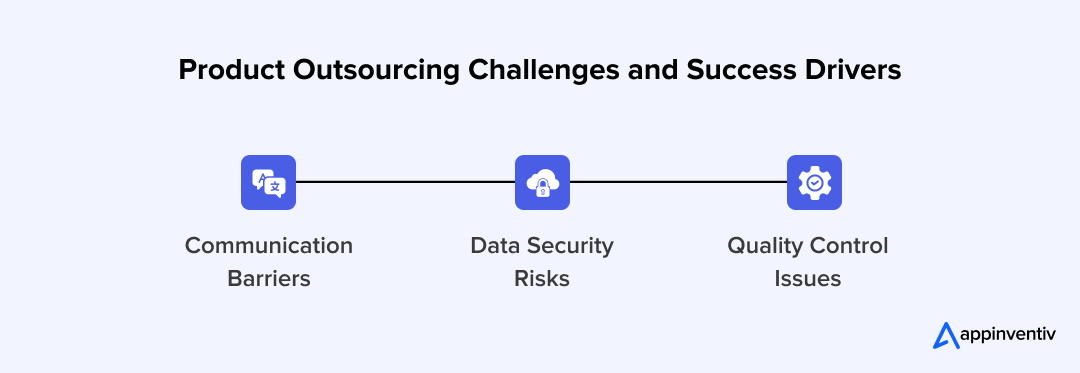
Communication Barriers
Challenge: Product outsourcing means partnering with an IT team across different time zones, languages, and work cultures. These differences in time, language, etc., can cause misunderstandings and delays.
Solution: Establish clear communication channels using Slack, Microsoft Teams, and Zoom to ensure smooth collaboration between in-house and outsourced teams.
Data Security Risks
Challenge: Outsourcing product development involves sharing confidential business data with external third-party service providers. This makes businesses vulnerable to breaches and IP theft.
Solution: Work with a reliable outsourced product development company that complies with ISO 27001, GDPR, SOC 2, and other applicable guidelines. Additionally, the company must sign NDAs and implement access control mechanisms to protect sensitive information.
Quality Control Issues
Challenge: When working with an outsourced team, you often lose direct control over every development aspect. This can sometimes lead to inconsistencies in quality, missed expectations, or the need for costly revisions.
Solution: Establish clear quality benchmarks from the outset and integrate continuous testing, regular code reviews, and milestone-based evaluations throughout the development cycle. Consider appointing a dedicated project manager to oversee quality benchmarks.
Real World Examples of Companies that Outsourced Product Development and Received Tangible Outcomes
Even if product development outsourcing received immense traction during the pandemic outbreak, this practice has been ingrained in the corporate world for years. For instance, some business giants like Google, WhatsApp, KFC, IKEA, etc., and startups like Mailburn, Solix, etc., outsourced product development services at certain points and received head-turning outcomes. Here are some real-world examples of companies that leveraged outsourcing to achieve tangible results:
Google strategically outsources various aspects of its product development, including software engineering and customer support, to gain access to top global talent. This approach helps the company stay ahead in innovation while optimizing operational efficiency.
Domino’s
Domino’s outsourced Appinventiv’s UI/UX design and app development services to reimagine its mobile app, making food ordering faster and more intuitive. By integrating AI-driven recommendations, real-time tracking, and a seamless checkout process, the app led to a 23% increase in conversion rates and higher customer engagement.
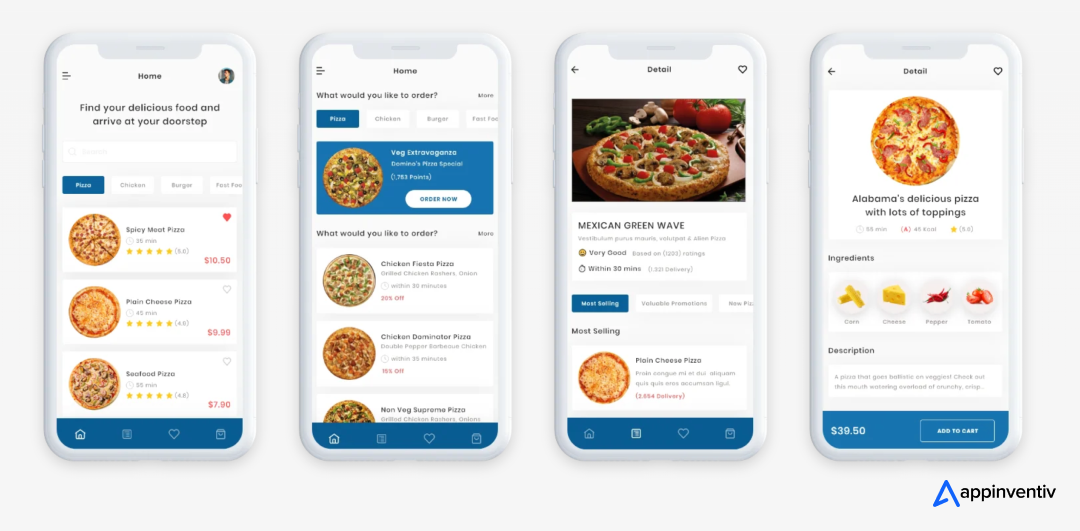
KFC
Americana Group’s KFC outsourced Appinventiv’s app development services to scale its digital presence in the Middle East. Appinventiv developed and launched seven mobile apps in just one year, helping KFC expand efficiently, reduce development time, and bring high-quality digital solutions to market faster, a crucial advantage in today’s competitive landscape.
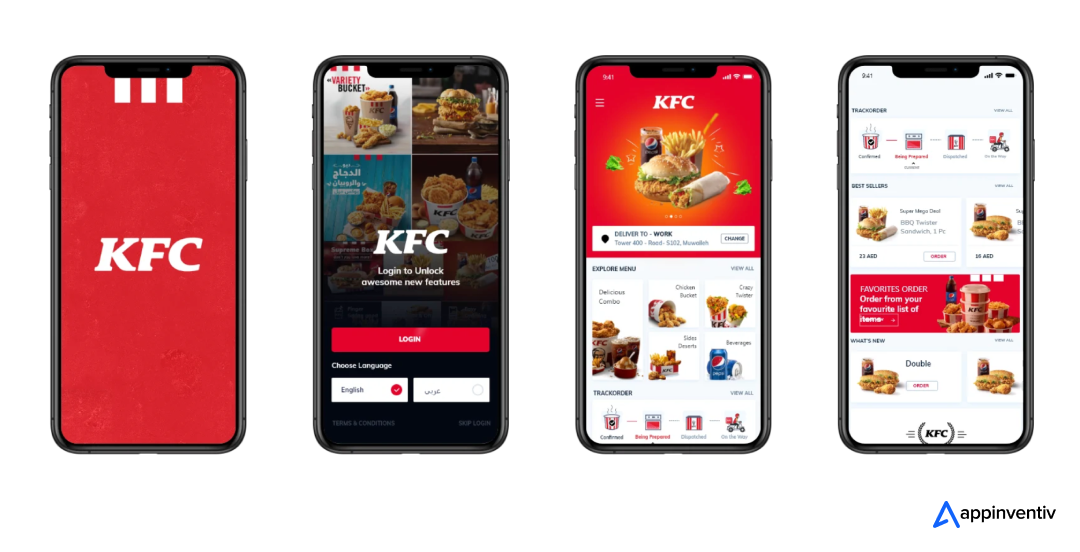
WhatsApp outsourced its app development to a team of expert Eastern European developers in its initial phase. This cost-effective strategy allowed the company to build a high-quality, scalable messaging platform that revolutionized communication.
IKEA
IKEA partnered with Appinventiv to build an enterprise resource planning (ERP) system, streamlining operations across multiple regions. By outsourcing ERP development to Appinventiv, IKEA could integrate real-time inventory tracking, automated order management, and even redefine its marketing strategy.

What is the Cost of Outsourced Product Development
The cost to outsource product development varies widely depending on various factors, including the project’s complexity, feature set, UI/UX design, the choice of tech stack, platform compatibility, the location of the outsourcing partner, the outsourcing model chosen, and so on.
On average, outsourcing product development costs range from $40,000 to $400,000, depending on your unique project requirements and several other critical components.
Here is a table outlining the various factors influencing the product development outsourcing cost:
| Factors | Impact on Cost | Influencing Cost | |
|---|---|---|---|
| Project Complexity | More intricate functionalities and integrations require advanced expertise, thus increasing development costs. | 20% | $44,000 |
| Feature Set | More features, customizations, and third-party integrations contribute to higher costs. | 15% | $33,000 |
| Technology Stack | Integrating emerging technologies like AI, blockchain, and IoT demands specialized skills, which raises development expenses. | 15% | $33,000 |
| Platform Compatibility | Building for multiple platforms (web, iOS, Android) requires additional effort and testing. It increases outsourcing costs. | 10% | $22,000 |
| Outsourcing Model | Fixed-price models offer cost predictability, while time-and-material or dedicated teams provide flexibility but can lead to variable expenses. | 10% | $22,000 |
| Regulatory Compliance | Adhering to industry standards such as HIPAA, GDPR, or ISO 27001 adds security and legal costs. | 10% | $22,000 |
| UI/UX Design | High-end, interactive, and visually appealing designs require more effort from skilled designers, influencing the outsourcing budget. | 15% | $33,000 |
| Post-Launch Maintenance | Opting for outsourced IT support, app maintenance, regular updates, and scalability considerations can add recurring costs. | 5% | $11,000 |
Ensure a Seamless Journey of Product Development Outsourcing with Appinventiv
Have a groundbreaking vision in mind? Looking to bring your product to life? Appinventiv has got you covered. Whether you are an emerging startup looking to turn your innovative idea into reality or an established enterprise wishing to expand your digital wings, we are your trusted partner to outsource product development services.
With over a decade of experience in the industry, we have helped countless businesses across industries build high-performance platforms that drive real results. Our skilled team of 1600+ tech evangelists has delivered over 3000+ successful projects so far. They collaborate with you at every project delivery stage, from ideation and design to development, deployment, and continuous optimization.
Beyond product development outsourcing, we provide strategic guidance to identify your pain points and deliver a comprehensive custom product that bridges the business gap, meets industry standards, resonates with users, and achieves market success.
In short and straight terms, with Appinventiv, you don’t just get outsourcing service; you get a dedicated tech partner committed to your digital growth. Contact us now.
FAQs
Q. How to outsource software product development?
A. When outsourcing product development, you need to follow a structured step-by-step process:
- Define clear objectives
- Choose the outsourcing model
- Find the right outsourcing partner
- Ensure seamless communication
- Seal the deal
- Monitor performance and quality
Q. How much does it cost to hire a product outsourcing development?
A. The cost of outsourcing product development ranges between $40,000 and $400,000 or more, depending on your unique project requirements and other essential elements. These cost-driving factors include but are not limited to the project’s complexity, tech stack, UI/UX design, features and functionalities, experience and expertise of developers, and so on.
To get a more precise estimate for product development outsourcing, share your requirements with us and get a tailored quotation.
Q. When to outsource product development?
A. Outsourcing product development is the right move when:
- Your in-house team lacks the necessary technical skills.
Outsourcing gives you access to specialized talent without the need for extensive hiring.
- Rapid development is essential, and you need to meet tight deadlines
Outsourcing helps speed up the process with dedicated teams working efficiently on your project.
- Software development is not your primary focus or functional area.
Outsourcing allows you to concentrate on your main business while experts handle the technical aspects.
- You need to build a custom product with a highly advanced tech stack.
Outsourcing ensures you have a dedicated team with the right experience to bring your vision to life.


- In just 2 mins you will get a response
- Your idea is 100% protected by our Non Disclosure Agreement.

Key Takeaways The global mental health app market is set to expand dramatically, creating a strategic opportunity for businesses and healthcare providers alike. Defining the right app type (self-management, CBT, teletherapy, peer support) influences your design, technology, and monetisation model. A structured development roadmap—target audience → UI/UX design → core functionalities → regulatory compliance →…

Did you know that, according to McKinsey, tokenized money market funds have already soared past $1 billion in assets under management as of early 2024? They also estimated that the tokenized market capitalization across asset classes could reach about $2 trillion by 2030.

In today’s digital age, having a strong online presence is the key to unlocking the door of business transformation and reaching the target audience. One of the most efficient ways to achieve this is through web app development. Web applications have grown at an unprecedented pace in the past decade, revolutionizing operations across various industries.…








